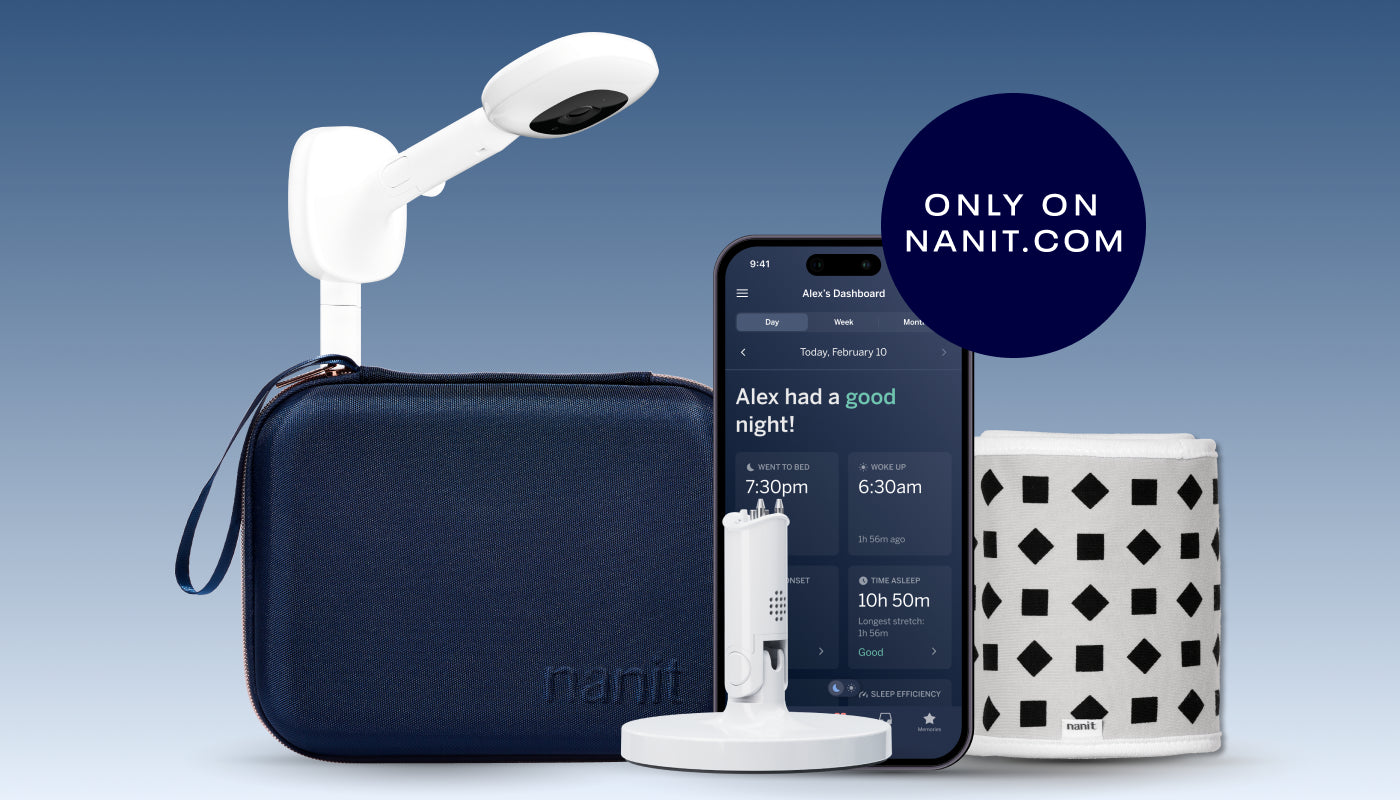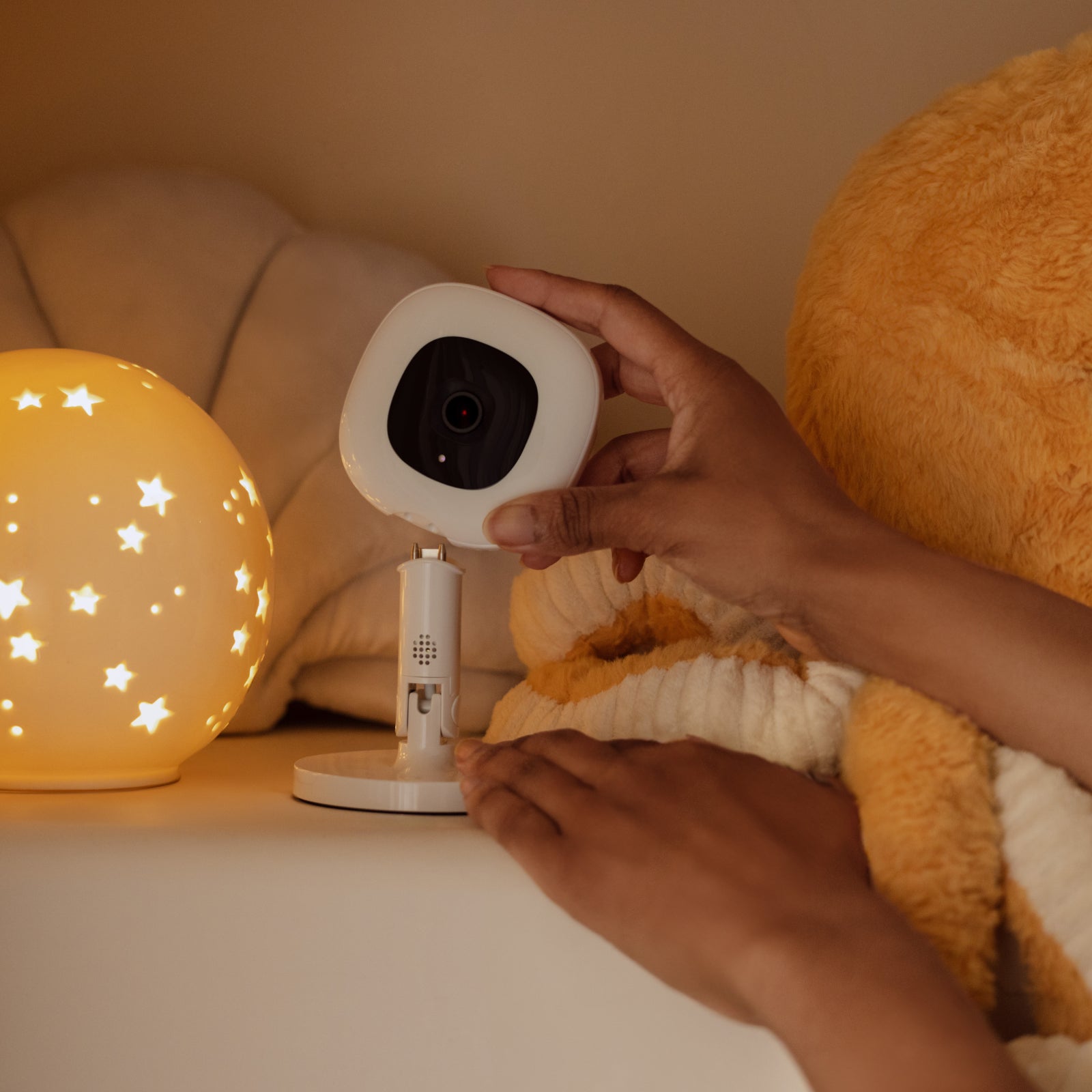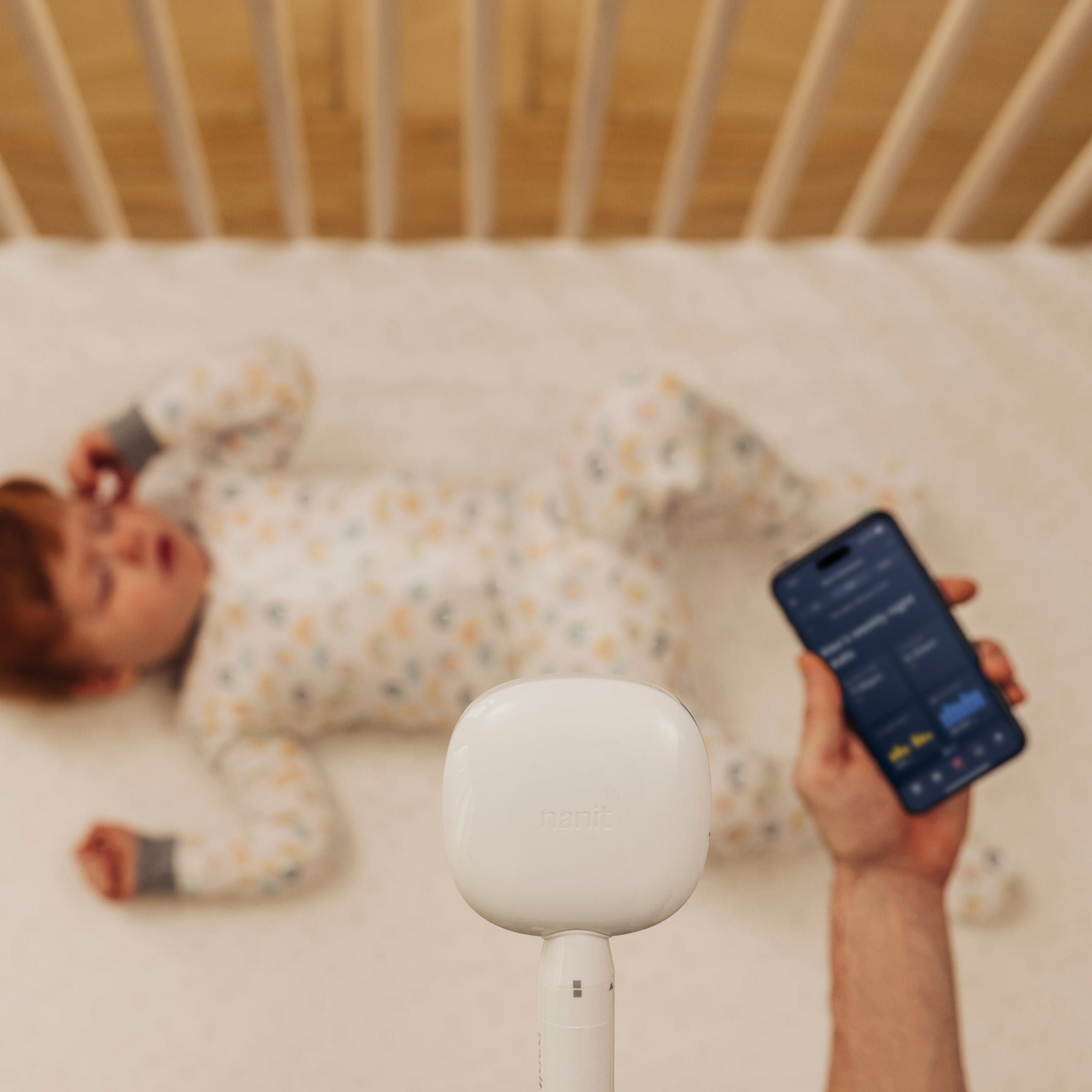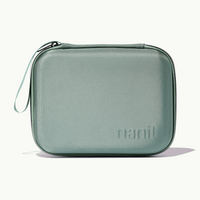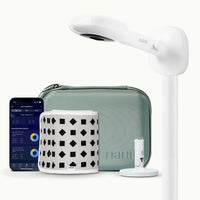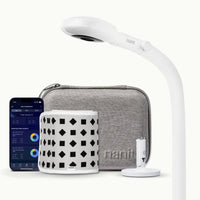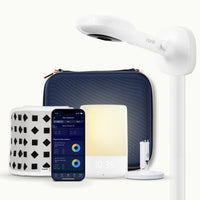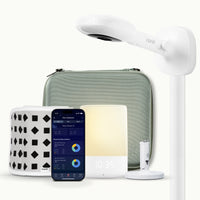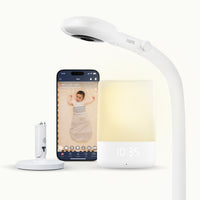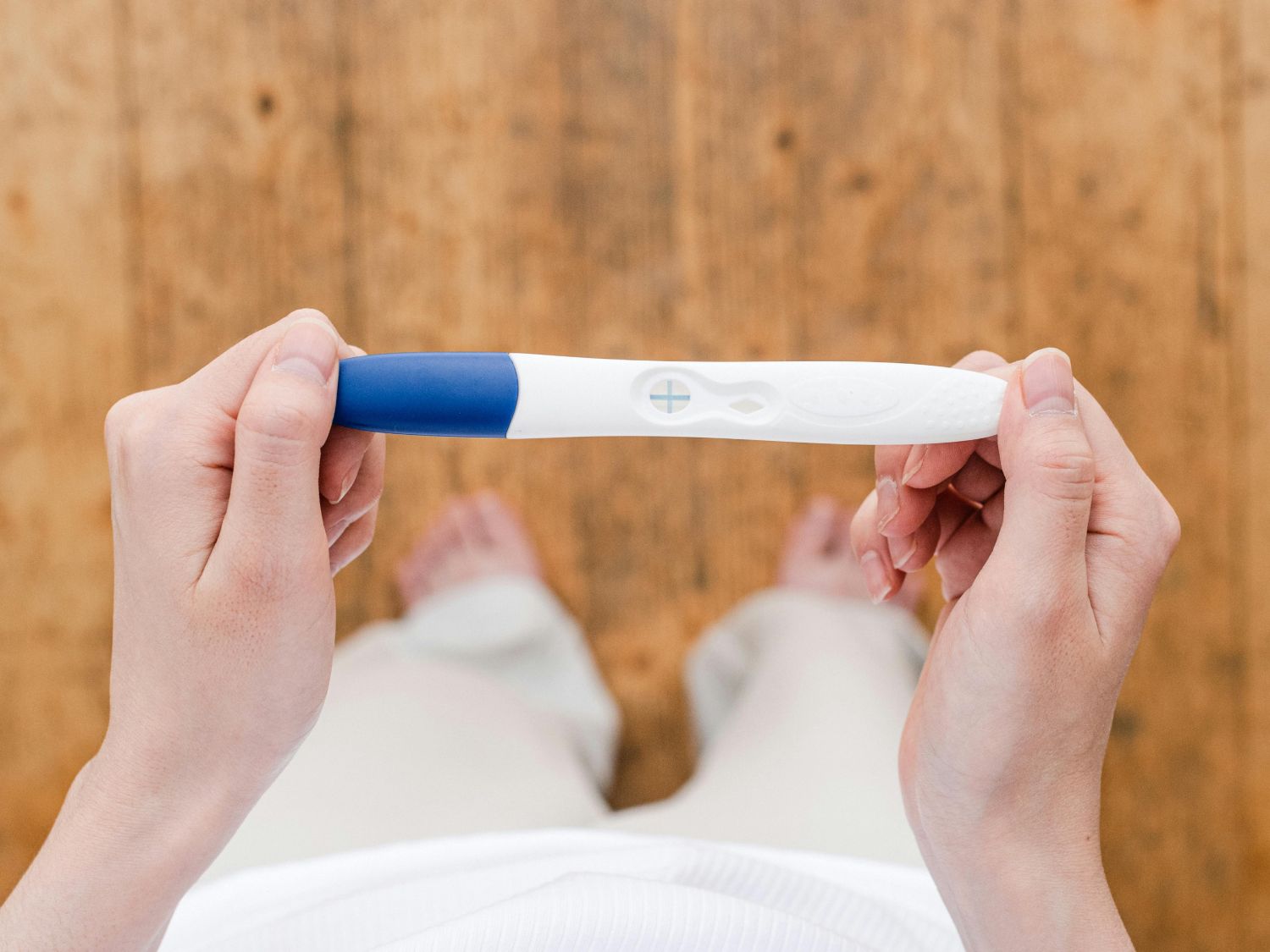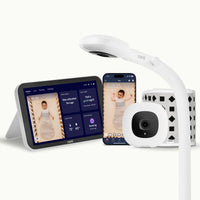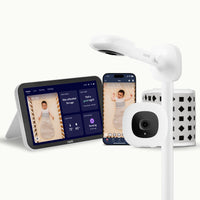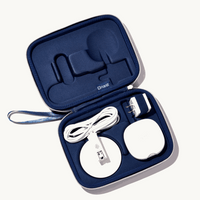If you're trying to conceive, you've probably found yourself researching at all hours of the day and night wondering if you're "doing it right". The journey to pregnancy can feel overwhelming, filled with questions about timing, fertile windows, and well-meaning advice that leaves you more confused than confident. You're not alone in this journey, and the good news is that understanding ovulation and using the right tools can significantly improve your chances of conception.
Ovulation calculators and predictors are gamechangers for people trying to conceive, offering insights into the most fertile days of your cycle. Since everybody is different, getting familiar with how ovulation and these tools work can empower you to make informed decisions about your reproductive health and timing.
You can read more in our candid conversation around fertility and conception, but the path to pregnancy isn't always straightforward. With the right info and tools, you'll find your rhythm.
What Actually is Ovulation?
Back to Health 101 really quick: Ovulation is when a mature egg is released from your ovary and is ready for fertilization. This typically occurs once per menstrual cycle, usually around day 14 of a 28-day cycle, though this can vary significantly from person to person.
The egg is viable for fertilization for approximately 12-24 hours after ovulation. However, sperm can survive in the female reproductive tract for up to 5 days under optimal conditions. This creates a fertile window of approximately 6 days each cycle: the 5 days leading up to ovulation plus the day of ovulation itself. It’s important to note that body temperature and cervical mucus consistency change during ovulation, so tracking those are key to identifying your fertile window.
Understanding your own ovulation pattern is crucial because timing intercourse during this fertile window maximizes your chances of conception. This is where ovulation calculators and predictors come in.
How Ovulation Calculators Work
Ovulation calculators use mathematical algorithms based on average menstrual cycle patterns to predict when you're most likely to ovulate. The most basic calculators use the calendar method, which assumes ovulation occurs 14 days before your next period begins. However, fancier calculators take into account:
-
Your average cycle length over several months
-
Variations in your cycle length
-
Additional data points like basal body temperature, cervical mucus, and hormone changes
-
Previous ovulation patterns you've recorded
Keep in mind: These tools make smart guesses, but your actual ovulation day may vary from month to month due to factors like stress, illness, travel, or hormonal fluctuations.
Options for Your Ovulation Toolkit
1. Basal Body Temperature (BBT) Monitoring
Your basal body temperature rises slightly (0.2-0.5°F) after ovulation due to increased progesterone levels. By tracking your temperature daily with a special BBT thermometer, you can identify this shift to confirm you ovulated.
Best for: If you want to confirm ovulation and don't mind taking your temperature at the same time every morning.
2. Cervical Mucus Monitoring
The more you know: Your cervical mucus changes throughout your cycle, becoming clearer, stretchier, and more abundant as you approach ovulation. This "egg white" cervical mucus indicates peak fertility. While this method requires practice to get right, it's free and can be very accurate once you learn to recognize the signs.
Best for: If you want a natural, cost-effective method and are comfortable with getting familiar with your bodily fluids down there.
3. Digital Ovulation Predictor Kits (OPKs)
Ovulation predictor kits detect the surge in luteinizing hormone (LH) that occurs 12-36 hours before you ovulate. They work similarly to pregnancy tests: you pee on a stick or into a cup, and the test shows whether the hormone surge has been detected. Digital versions provide clear "yes" or "no" results, with no need to worry about interpreting test lines.
Best for: If you have a regular cycle and want definitive, hormone-based confirmation of their fertile window.
4. Fertility Tracking Apps
Smartphone apps have revolutionized fertility tracking by making it easy to log cycle data, symptoms, and other fertility signs. Many apps use AI to learn your unique patterns and improve predictions over time. Some popular features include:
-
Cycle tracking and prediction
-
Symptom logging
-
Basal body temperature charting
-
Cervical mucus tracking
-
Medication and supplement reminders
Best for: If you prefer comprehensive tracking and want to better understand your body's patterns over time.
5. Advanced Fertility Monitors
These sophisticated devices track multiple fertility indicators at the same time, like LH, estrogen, and progesterone levels, or use sensors to monitor saliva patterns. They often provide more accurate predictions than single-parameter methods.
Best for: If you want the most comprehensive and accurate tracking, and are willing to invest in higher-cost technology.
|
Method |
Accuracy |
Cost |
Ease of Use |
|
Calendar Method |
Moderate |
Free |
Easy |
|
Ovulation Predictor Kits |
High |
Moderate |
Easy |
|
Fertility Apps |
Moderate to High |
Free to Moderate |
Easy |
|
BBT Monitoring |
High |
Low |
Moderate |
|
Cervical Mucus |
High |
Free |
Moderate |
|
Advanced Monitors |
Very High |
High |
Easy |
Tips for Boosting Accuracy
1. Track Multiple Cycles
It can be tempting to rely on predictions after just one cycle, but you should track for at least 3-6 cycles for more accurate insights into your body's patterns. This allows calculators and apps to learn your unique rhythm and account for normal variations in cycle length.
2. Use Multiple Methods
Combining methods—like using OPKs and also checking your cervical mucus—can provide more comprehensive and accurate results. This approach, known as the symptothermal method, is particularly effective if you have an irregular cycle.
3. Be Consistent
Whether you're taking your temperature, testing with OPKs, or checking cervical mucus, consistency is key. Try to do your tracking at the same time each day for the most reliable results.
4. Consider Your Lifestyle
Stress, illness, travel, and changes in your sleep patterns can all affect ovulation timing. You can also take notes about these factors in a tracking app or journal, and they can help explain variations in your cycle.
5. Don't Ignore Your Body's Signals
While technology is helpful, pay attention to your body's natural signs of fertility—changes in energy levels, mood, breast tenderness, and libido. These can provide valuable info about your fertile window.
Pro Tip: Start Early
You don't have to wait until you're "ready" to start tracking. Getting to know your cycle before you're actively trying to conceive can help you feel more prepared and confident in your body's patterns when the time comes.
Ovulation Myths and Misconceptions
Myth: All Women Ovulate on Day 14
Reality: While day 14 is the average for a 28-day cycle, ovulation can occur anywhere from day 8 to day 21, depending on your cycle length and individual variation. This is why personalized tracking is so important.
Myth: You Can't Get Pregnant During Your Period
Reality: It's unlikely but is possible to get pregnant during your period, especially if you have shorter cycles or irregular periods. Sperm can survive for up to 5 days, so if you ovulate early, conception is possible.
Myth: Ovulation Calculators Are 100% Accurate
Reality: No prediction method is 100% accurate. Calculators provide estimates based on averages and your past cycles, but ovulation can vary from month to month. Use them as guides, not guarantees.
When to Chat with Your Doctor
Ovulation calculators and predictors are valuable, but there are times when professional medical support is needed. Consider consulting with a healthcare provider if:
-
You've been trying to conceive for 12 months (or 6 months if you're over 35)
-
Your cycles are consistently irregular or absent
-
You suspect you're not ovulating (no LH surge detection, no temperature shift)
-
You have known fertility issues or risk factors
-
You're experiencing concerning symptoms like severe pelvic pain
-
You have a history of miscarriage or pregnancy complications
Your doctor can perform more comprehensive fertility assessments, including hormone testing, ultrasounds, and other diagnostic procedures that will help guide you on your journey.
Preparing your Body for Pregnancy
While you're tracking ovulation and timing conception, it's also important to help get your body ready for growing a person.
Preconception Health
-
Taking prenatal vitamins with folic acid
-
Maintaining a healthy diet and regular exercise routine
-
Avoiding alcohol, smoking, and limiting caffeine
-
Managing stress through relaxation techniques or counseling
-
Getting adequate sleep (7-9 hours per night)
Building Your Support Network
Trying to conceive can be an emotional rollercoaster, and connecting with other people who are trying to conceive, joining online communities, or working with fertility counselors can make the ride easier.
Our pregnancy care package guide offers thoughtful ideas for supporting friends, family members, and yourself through fertility journeys.
Looking Forward
Once you're pregnant, your focus will shift from tracking ovulation to monitoring your baby's development and preparing for their arrival.
Start thinking about the essentials you'll need: Our comprehensive nursery checklist covers everything from the basics like cribs and diapers to advanced monitoring tools that help you track your baby's sleep and development.
Complete Sleep Solutions for Your Growing Family
As you prepare for your baby's arrival, consider the Nanit Pro Smart Baby Monitor for monitoring your baby's sleep patterns, breathing, and development, giving you peace of mind during those precious early months.
Keep Calm and Stay Positive
It's important to remember that for many people, conception doesn't happen immediately. The journey to parenthood is unique for everybody. Even with perfect timing and optimal health, the chance of conception in any given cycle is approximately 15-25% for couples under 35. This is completely normal, and it doesn't mean anything is wrong.
Stay focused on the things you can control: maintaining your health, tracking your cycles accurately, and timing intercourse during your fertile window. Celebrate small victories, like learning to recognize your body's signals or successfully predicting ovulation.
Final Thoughts
Ovulation calculators and predictors are powerful tools that can significantly improve your chances of conception when used correctly. Whether you choose a simple calendar method or invest in advanced fertility monitoring technology, the key is finding an approach that works for your lifestyle and provides the information you need to make informed decisions.
Don't forget that while these tools are helpful, they're just one part of your fertility journey. Maintaining good health, managing stress, and staying connected with your healthcare provider are just as important.
As you navigate this journey, be patient with yourself. Every cycle brings new information about your body, and every month of tracking brings you closer to understanding your unique patterns. Plus, the journey to parenthood is just the beginning of a lifelong adventure. While you're focused on conception now, soon you'll be tracking feeding schedules, sleep patterns, and developmental milestones. The attention to detail now will serve you well as a parent!

